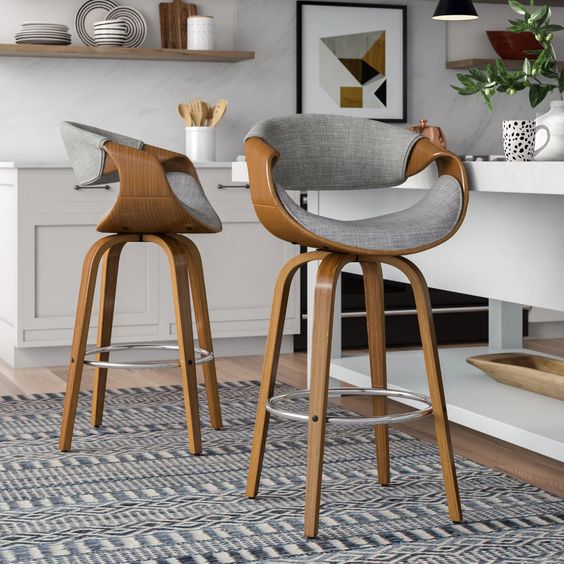In the realm of furniture design, where grandiose chairs and plush sofas often steal the spotlight, the humble stool quietly asserts its presence with understated elegance and utilitarian charm. From ancient civilizations to modern interiors, stools have remained steadfast companions, offering a seat of versatility, simplicity, and timeless appeal. Let’s delve into the world of stools, exploring their rich history, diverse forms, and enduring significance in both practical and symbolic contexts.
A Brief History:
Stools have adorned human dwellings for millennia, dating back to ancient civilizations such as Egypt, Mesopotamia, and China. Initially crafted from natural materials such as wood, stone, or animal hides, early stools served primarily functional purposes, providing a simple yet sturdy seat for individuals to rest upon.
Over time, stools evolved in form and function, adapting to the needs and aesthetics of different cultures and eras. From ornately carved thrones in royal courts to rustic wooden stools in peasant cottages, these humble seats became ubiquitous fixtures in households, taverns, workshops, and public spaces around the world.
Versatility in Design:
One of the defining features of stools is their versatility in design. Unlike chairs, which typically feature backs and armrests, stools come in a myriad of shapes, sizes, and styles, ranging from minimalist to ornate, from rustic to contemporary. Whether as sleek modern designs crafted from metal and plastic or rustic farmhouse stools hewn from reclaimed wood, there is a stool to suit every taste and interior aesthetic.
Moreover, stools are prized for their space-saving attributes, making them ideal for compact living spaces, bustling kitchens, and crowded bars. Their compact size and lightweight construction allow for easy mobility and storage, making them indispensable pieces of furniture in modern lifestyles characterized by flexibility and adaptability.
Practicality Meets Comfort:
Despite their simple appearance, stools offer surprising comfort and ergonomic support. Their backless design encourages upright posture and freedom of movement, making them ideal for tasks that require agility and flexibility, such as cooking, crafting, or conversing with friends.
Additionally, stools often feature contoured seats or cushioned tops to enhance comfort, ensuring that occupants can linger for hours without discomfort. Adjustable-height stools with swivel seats further enhance usability, allowing users to customize their seating experience to suit their needs and preferences.
Symbolism and Cultural Significance:
Beyond their practical function, stools hold symbolic significance in various cultures and traditions. In many societies, the act of offering someone a seat on a stool is a gesture of hospitality, respect, and equality, symbolizing a willingness to engage in conversation and camaraderie.
Moreover, stools feature prominently in religious rituals, ceremonies, and symbolic rites of passage. In some cultures, sitting on a ceremonial stool signifies authority, wisdom, or spiritual connection, imbuing these humble seats with profound cultural and spiritual significance.
Conclusion:
In a world filled with elaborate furnishings and extravagant designs, the humble stool stands as a testament to the enduring appeal of simplicity, versatility, and functionality. From ancient civilizations to modern interiors, stools have remained steadfast companions, offering a seat of comfort, practicality, and symbolic resonance.
So, the next time you encounter a stool in your home, workplace, or favorite gathering spot, take a moment to appreciate its timeless elegance and understated charm. In its unassuming simplicity lies a seat of versatility and hospitality—an invitation to sit, relax, and savor life’s simple pleasures.

